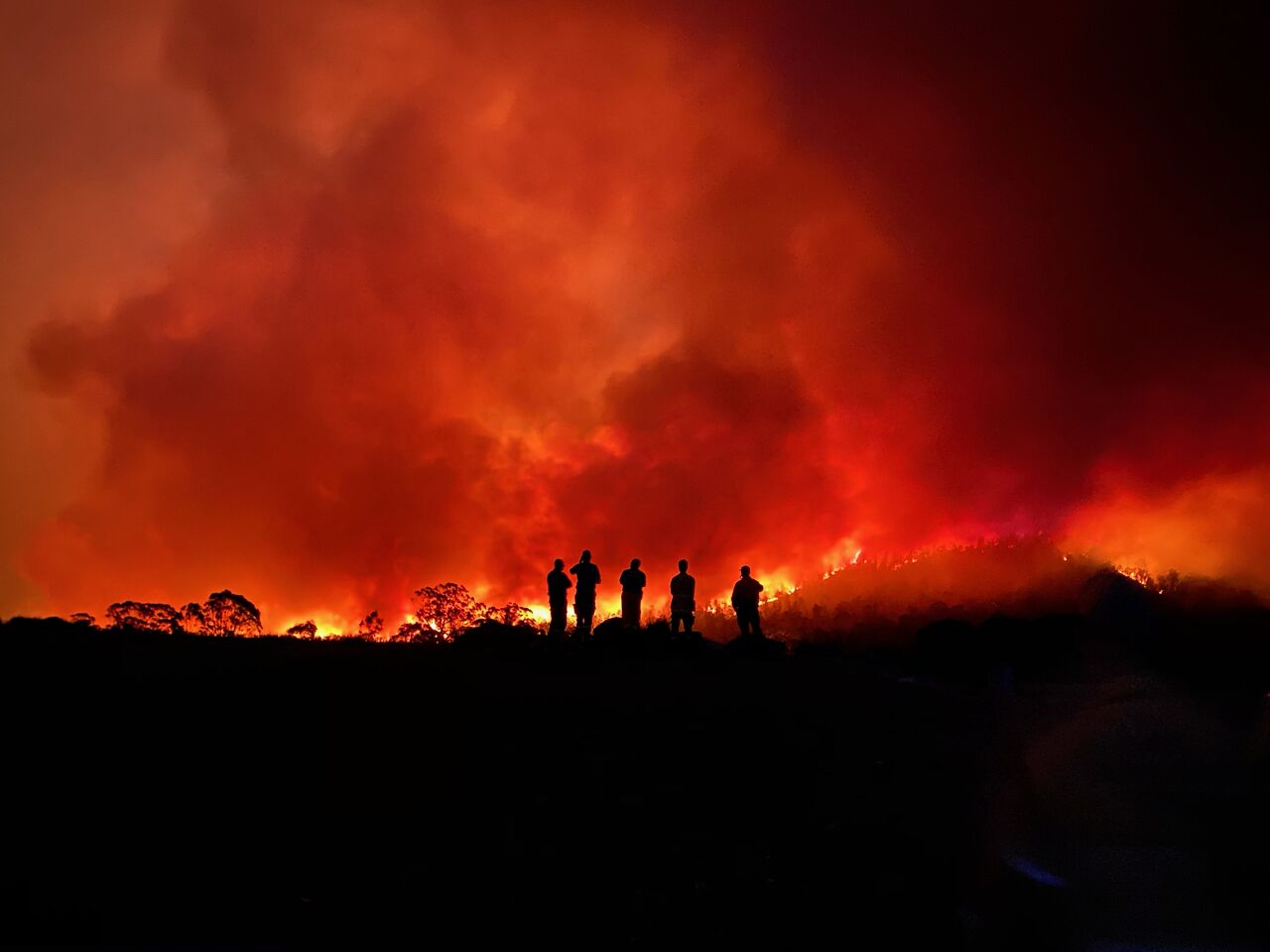The best way I can describe the experience of summer 2019-2020 in Australia is with a single word: exhausting. We have been on fire for months. There are immediate threats in progress and new ones at the ready. Our air quality levels dip in and out of hazardous, more often in the former category than the latter. This has been challenging for everyone. For many, mere exhaustion may feel like a luxury.
In the trenches of the ongoing fires are the Australian emergency service workers, especially the “fireys,” who have been tireless in their efforts to save homes, people, and wildlife. While the primary and most visible part of their work is the relentless job of managing fires, there is also a secondary–though critical–task of public communication, keeping people informed and providing material for anxious-refreshers looking for information about “fires near me.” In the last few days, as fires have approached the Canberra suburbs where I live, an interesting variant of public safety communication has emerged: Instagramable photography.
A tweet from the local emergency service account (@ACT_ESA) announced Wednesday night that a major road would be closed to anyone who isn’t a resident of the area. The reason for the closure was to prevent a growing obstacle to public safety—disaster tourism. Apparently, people have been “visiting” the fires, generally taking dramatic photographs to share on social media. These disaster tourists put themselves in harm’s way, clog the roads, and generally create more work for emergency responders. The road closure was a hard and fast way to keep people out. It was not, however, the ESA’s only action. In addition to closing roads and posting notices, the team also created and shared imagery of the fires-in-progress with direct allusion to the perceived goals of would-be disaster tourists (i.e., social sharing).
CBR, we know the fire makes for some insta-worthy content. Stopping on the side of the road creates an unnecessary risk to public safety.
Please do not clog our roads to take your own pictures.
Use these. #StopDisasterTourism📸Gary Hooker, ACTRFS pic.twitter.com/vU7lboVwnq
— ACT ESA (@ACT_ESA) January 29, 2020
The response by the ACT ESA is a subtle combination of empathy, understanding, and practicality. Rather than a punitive or derogating reproach, the response assumes–I suspect correctly– that visitors aren’t there to get in the way or cultivate clout, but to bear witness, bolster awareness, seek validation, and more generally, cope. Visually, the fires traverse beauty and horror in a way that is difficult to describe. You need to see it for yourself. And that’s why people take and share pictures. They are in the midst of something that is inarticulable, and yet feel compelled to articulate it through the means at their disposal. Capturing the destruction, from the best angle, means speaking with clarity. It means concretizing an experience that would be surreal, were it not happening with such immediacy and acuity. Words do little justice to the gorgeous tragedy of a red sunset.
And so, the work of fire safety in Australia 2020 now includes mollifying would-be disaster tourists by taking more Instagramable photos than visitors could take themselves. It’s a warning and a plea, delivered with a gift.
Headline Image Credit Gary Hooker, ACTRFS (Australian Capital Territory Rural Fire Service), via @ACT_ESA
Want to help? Here are some options
Jenny Davis is on Twitter @Jenny_L_Davis

